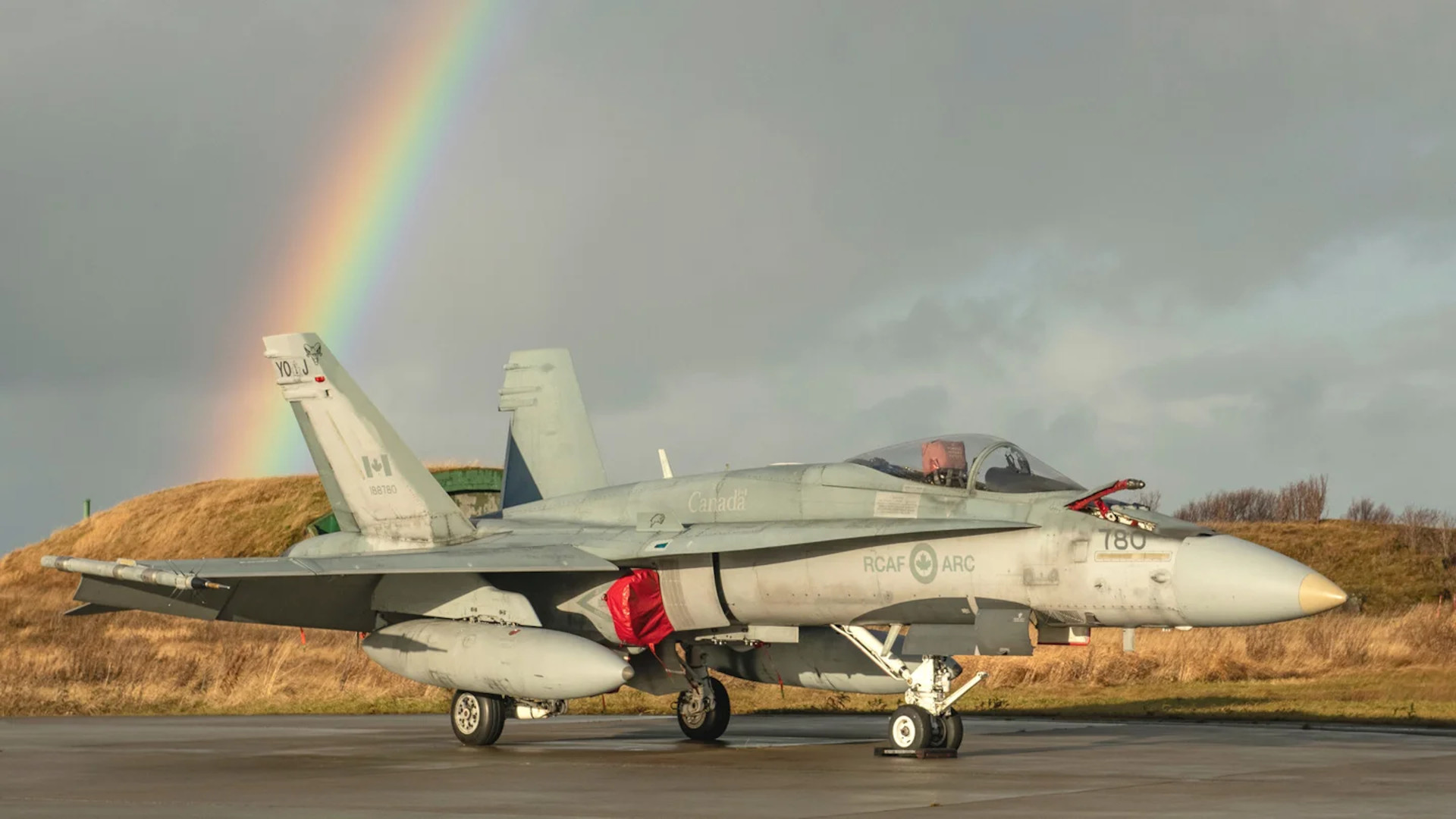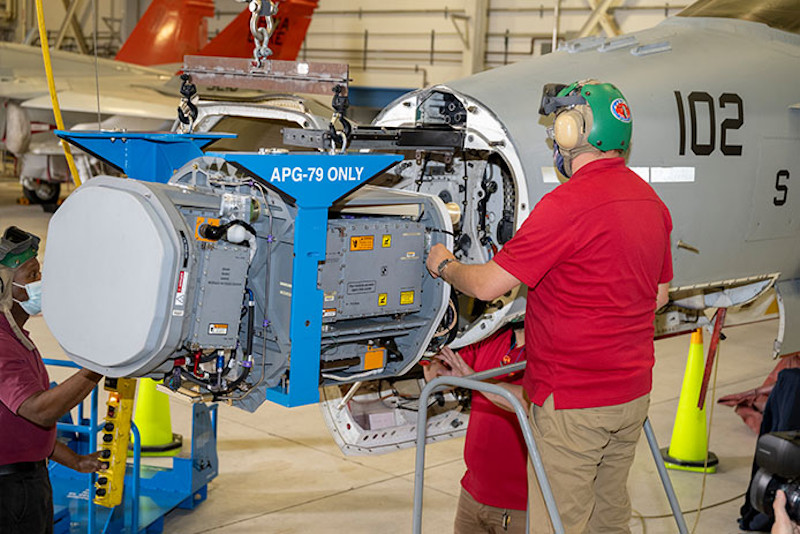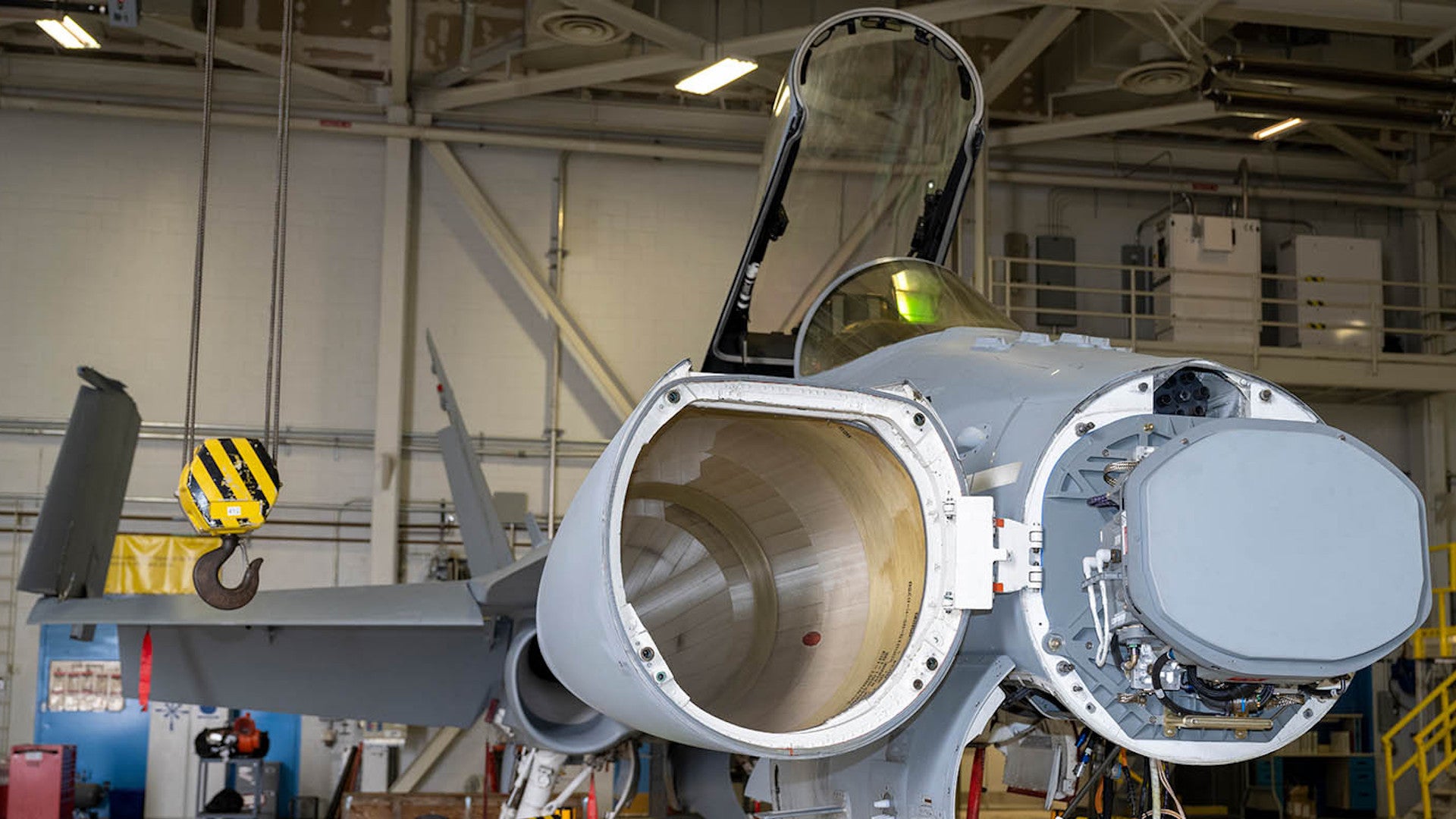Raytheon has secured a deal worth approximately $140.3 million to supply AN/APG-79(V)4 active electronically scanned array (AESA) radars to the Royal Canadian Air Force. This radar is one of, if not the most important component of a badly needed upgrade package that at least some of Canada’s CF-18A/B+ Hornet fighter jets are set to receive in the coming years. Details about this Hornet Extension Program, which you can read more about here, first emerged publicly last year.
Raytheon’s Intelligence and Space division announced it had received the contract for an unspecified number of radars on Sept. 23, 2021. The U.S. Naval Air Systems Command (NAVAIR) is overseeing the purchase of the radars for Canada through the U.S. government’s Foreign Military Sales (FMS) program. This arrangement makes good sense from a contracting perspective, as well as with regard to economies of scale, since NAVAIR is already buying AN/APG-79(V)4s as part of a separate upgrade program for a portion of the U.S. Marine Corps’ legacy F/A-18A-D Hornet fleet. The (V)4 version of this radar is a scaled-down and enhanced derivative of the AN/APG-79(V)1 found on F/A-18E/F Super Hornet fighters and EA-18G Growler electronic warfare jets.

“Having the right tool for the job matters, and we’re committed to delivering just that for the Royal Canadian Air Force,” Eric Ditmars, Vice President of Secure Sensor Solutions at Raytheon Intelligence and Space, said in a statement. “This upgrade to AESA [active electronically scanned array] radars with GaN [Gallium Nitride] supports longer detection ranges and multiple-target tracking.”
At present, the Royal Canadian Air Force (RCAF) has around 75 CF-18A/B+ jets. In addition, it is slowly incorporating a number of additional ex-Royal Australian Air Force (RAAF) F/A-18A/B Hornets into that force, with 18 of those jets eventually expected to enter Canadian service.
AESAs, in general, can detect and track targets at greater ranges, and do so faster and more accurately than older, comparably sized mechanically-scanned designs. GaN technology, which you can read more about here, only helps an AESA radar be more efficient and precise, increasing its ability to discriminate between targets — even smaller, harder to detect ones such as low-flying cruise missiles — and track more of them at once. The increased power also helps improve its resistance to electronic warfare jamming and increases the radar’s range.

The new AESAs are a critical update for Canada’s CF-18A/B+ fighters, which are presently equipped with mechanically scanned AN/APG-73 radars that they received as part of a previous upgrade program. The new AN/APG-79s will improve the ability of these aircraft to support the U.S.-Canadian North American Aerospace Defense Command (NORAD), a key mission for the RCAF’s Hornet fleet. NORAD oversees the defense of the airspace over both countries. RCAF CF-18A/B+s have also participated on multiple occasions in NATO’s rotational air policing missions over Iceland and the Baltic Sea region, as well as air-defense missions emanating from Greenland.
In the air-to-air role, AESA radars on Canada’s Hornets could also open up a path to improved weaponry. Back in 2017, the U.S. government approved the sale of AIM-120D Advanced Medium-Range Air-to-Air Missiles (AMRAAMs), which have a greater range compared to earlier AIM-120C variants, among other improvements you can read about in detail here. At that time, The War Zone
highlighted the fact that the AIM-120D outranged the AN/APG-73 radars on Canada’s CF-18A/B+ jets, which would largely negate the capability boost that it might otherwise offer.

The AN/APG-79 also has air-to-ground functionality, which could be useful for Canadian Hornets should they find themselves conducting airstrikes in the future. Canada’s CF-18A/B+s most recently conducted these kinds of combat sorties when the country took part in U.S.-led coalition operations in Iraq and Afghanistan.
The AN/APG-79(V)4 is also a very cost-effective option for RCAF, given that it is already in production and a process has already been developed for integrating it onto the U.S. Marine Corps’ very similar F/A-18A-D Hornets. In addition, “the APG-79(V)4 uses solid-state electronic technology with no moving parts, which equates to lower maintenance and repair costs, and increased aircraft availability,” according to Raytheon.

These radars, as well as the associated cost considerations, and the rest of the planned Hornet Extension Program upgrades, are all extremely important for the future of the RCAF. The Canadian government currently expects to choose the winner of a competition to procure 88 new fighter jets in 2022. Lockheed Martin’s F-35A Joint Strike Fighter, Boeing’s F/A-18E/F Super Hornet, and Saab’s Gripen E are currently competing for that contract.
This procurement program, which began after the country’s current Liberal Party canceled earlier plans to purchase F-35As after coming to power in elections in 2015, has been an absolute saga that you can read about more here. The collapse of an initial plan to acquire F/A-18E/F Super Hornets as an interim solution led to the deal to buy ex-Royal Australian Air Force F/A-18A/B aircraft. That purchase has since been roundly criticized as a poor investment since Canada now has to pay to bring those older, second-hand jets up to its own standards.

At the same time, Canada has been a partner in the F-35 program since 1997, and technically still is, meaning it contributes tens of millions of dollars each year to support the continued development of that aircraft whether it ultimately buys any or not. You can read more about this obtuse arrangement here.
All of this only puts greater emphasis on the need to ensure that the RCAF’s existing Hornet fleet, including the ex-Australian examples, remains operationally relevant for years to come. Under the Canadian government’s current fighter acquisition schedule, which is hardly set in stone, the last legacy Hornets wouldn’t leave service until 2032.
At the same time, the full scope of the Hornet Extension Program is not entirely unclear. When the U.S. government approved the sale of the AN/APG-79(V)4 radars and other parts of the upgrade package last year, the expected deal included only 38 radars total. This was not enough to refit Canada’s entire Hornet fleet, even without the ex-Australian jets. Of course, even having a single AESA-equipped jet in a flight of CF-18A/B+ jets could provide benefits to the entire group, with information being shared with the other aircraft via datalinks.
So, a formal contract to begin adding AESA radars to the RCAF’s Hornets is an important step forward in giving those aircraft a capability boost they desperately need. However, it remains to be seen just how many jets ultimately receive these new radars, or any other upgrades under the Hornet Extension Program, as Canada continues to meander through its attempts to recapitalize the country’s fighter jet force.
Contact the author: joe@thedrive.com
